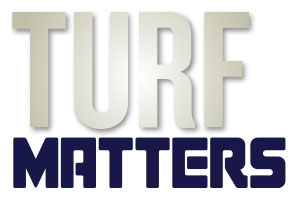Looking after your lawn: Following recent reports in both the national and local press that, “Homeowners are warned to brace for an onslaught of more than 200 billion daddy long legs!” (Daily Mail 25.9.20) the Turfgrass Growers Association (TGA) are warning that Leatherjacket populations may be on the increase this upcoming Winter and Spring.
Leatherjackets

Looking after your lawn
The TGA has been representing turf growers across the UK for 25 years, and with wet and mild winters slowly becoming the norm, the association would like to offer some advice and information to help you and your business through this potentially difficult period.
First and foremost, turf is not only a natural and living plant, but also host to a plethora of life, from spiders, to millipedes all the way down to microscopic organisms. Their presence in the turf is a sign of both a healthy soil and a fully functioning biological ecosystem.
However, your lawn can also create the perfect environment for insect larvae to thrive within the existing and imported soil. One of those to be potentially problematic is the Leatherjacket.
What are Leatherjackets?
Leatherjackets are the larval form of the European Crane Fly. Around 75% of insect species experience larval stage during their life-cycle, before they ultimately metamorphosise into their adult form, in this case the Crane Fly. Leatherjackets can measure up to 30 mm long, depending on their age, and their grey-brown leathery skin and lack of a distinct head distinguishes this species from others that are similar. Leather jackets can be found in many differing environments, but they are more prevalent in wetter soil conditions.
What damage can Leatherjackets do?
In the main, Leatherjackets feed on the root systems of the lawn, however they may occasionally move above ground to feed on the grass leaves at night. Any damage caused to your turf is usually superficial and most lawns will recover once the larvae metamorphosise into adults and fly away. In most cases the larvae will have no long-term effect on a lawn and will simply run their life-cycle unnoticed. Occasionally, however, and when populations are high there is a possibility that more severe damage can be caused, either via extensive larval feeding on the root system, or by surface damage caused by secondary predation, i.e. birds, mammals foraging for the larvae as a food source.
It is important to state that Leatherjackets may be present in all lawns and not just in newly laid turf.
Limiting the Damage:
Rule number one, always prepare and de-compact the soil before laying your turf ! Well drained soil will promote healthier and deeper root growth, enabling the grass plants to thrive and counteract any potential damage caused to the root system by the larvae. Populations are likely to be lower in drier soils, and attacks will be more severe on turf that is already under stress. This theory is backed up by research carried out by the Sports Turf Research Institute: Leatherjacket populations have been shown to decline by around 63% during normal colder Winter months. However, if the current trend of milder Winters continues, we may not see this decline decrease to around 35%, making it more important than ever to maintain a healthy lawn.
For more advice about preparing your ground for laying turf please visit our website.
Best course of Action:
Effective chemical control of Leatherjackets is no longer available for both turf growers, or for use domestically. It is therefore more likely than ever, that larvae may be present in newly delivered turf and established lawns. Biological control is sometimes possible by applying beneficial nematodes however, success is very dependant on timing of application and the climatic conditions that prevail at the time. Always follow label recommendations when applying any turf care products.
Another method of control that has proved successful is to cover the lawn with plastic sheeting. This will bring the larvae to the surface where they can simply be picked off the following morning, however it’s practicality will depend on the size of the lawn. Be sure not to leave any cover on for too long though as this may have a detrimental effect on the grass itself.
The best course of action if the larvae are present in newly delivered turf is simply to pick them off as you lay, and then either humanely destroy, or release in an area away from your turf or lawn. Insect larvae generally do not like disturbance and many simply will not survive the transition to anther environment.
As mentioned before, maintaining a well-drained, healthy lawn will also promote some damage resistance, and aid with recovery from a Leatherjacket infestation.
For the latest industry news visit turfmatters.co.uk/news
Get all of the big headlines, pictures, opinions and videos on stories that matter to you.
Follow us on Twitter and Instagram for fun, fresh and engaging content.
You can also find us on Facebook for more of your must-see news, features, videos and pictures from Turf Matters.


























